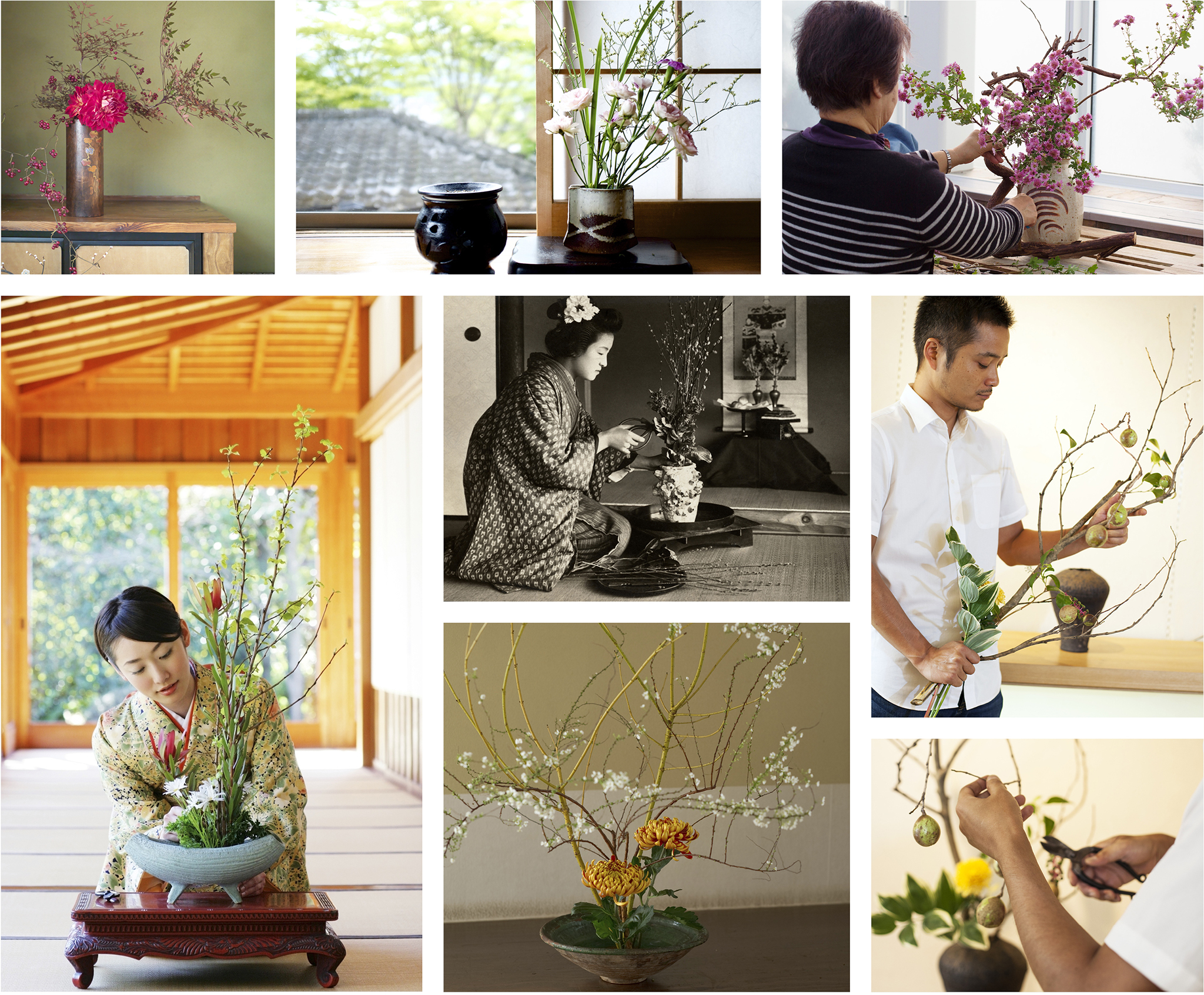Focus on
生け花
ikebana
Bringing flowers to life
A reminder of mono no aware, ikebana is the arrangement of flowers and other foliage into a living sculpture. The practice originated from early flower offerings at Buddhist temples, and was developed by Buddhist monks for use in the tea ceremony. In its simplest form, ikebana is a composition of just three elements, but styles have changed dramatically over the years. In the Edo Period, the rikka (“standing flowers”) style, consisting of many-branched structures representing Buddhist cosmology, became vogue, followed by the simpler shoka style of one or more plants focusing on the plant’s inner beauty.
Today, there is a mind-boggling variety of ikebana schools. Ikenobo is the oldest, adhering to the strict rules of rikka and shoka. The Ohara School, founded during the Meiji Period to incorporate use of Western flowers, revolutionized ikebana with the new moribana style, where flowers are “piled up” (moru) in flat containers to represent natural landscapes. Sogetsu was founded in 1927 in the belief that ikebana should be enjoyed anywhere, any time, using any material. More modern schools include Jiyuka (freestyle), without set rules and limited only by the artist’s imagination.
Be More Japan ikebana
space
Space is as dynamic a component of an arrangement as the foliage.
3 elements
The longest stem represents heaven and the shortest earth, with the middle stem symbolizing man.
Be More Japan ikebana
early pioneer
The first recorded master of flower arranging was 15th-century Buddhist monk Ikenobo Senkei.
learn
The Ohara and Sogetsu schools both offer ikebana classes in Tokyo.
Be More Japan ikebana

D Symbolism and seasonality are key considerations in the creation of an ikebana arrangement, which results in a wide array of sizes and compositions.
